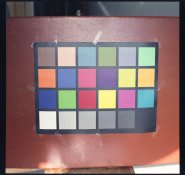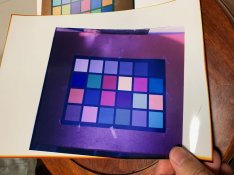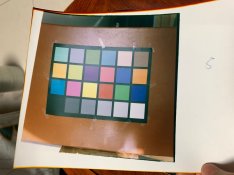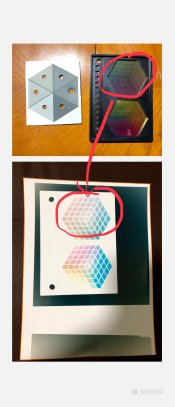MixingBlix
Member
Hello, I got consistent blue RA-4 prints regardless the content on the negatives.
If I set cyan to zero, the whole print gone pure blue. Adding up cyan filtration is the only way I can do. In order to get an acceptable print, my final filtration value is C90, M85, Y70. It looks crazy because I know enlarging color negative seldom uses cyan filtrations.
After that, I used Unicolor and Beseler subtractive color calculator to confirm CMY filtrations value and the results told me that Cyan is needed.
Please help.... got confused
Here I list my darkroom setups and tools for printing:
Epson scanned negative:

RA4 print if Cyan is low, 30 - 40:

RA4 print C90, M85, Y70 (the one look pretty close to scanned copy):

If I set cyan to zero, the whole print gone pure blue. Adding up cyan filtration is the only way I can do. In order to get an acceptable print, my final filtration value is C90, M85, Y70. It looks crazy because I know enlarging color negative seldom uses cyan filtrations.
After that, I used Unicolor and Beseler subtractive color calculator to confirm CMY filtrations value and the results told me that Cyan is needed.
Please help.... got confused
Here I list my darkroom setups and tools for printing:
- Darkroom: absolutely no light.
- Enlarger and lamp: LPL 5xxx color enlarger with 12V 100W Osram light bulb (3500K light temp).
- Negative used: Pro400 H and Ektar100 developed with fresh C-41B chemical. I can't see any visible flaw on the negatives. Scanned image (Epson V550) looks Ok to me.
- Exposure time: usually ranges from 10 - 20 seconds.
- Paper: Kodak RA4 paper, but not sure about the expire date, brought it from a local lab. stored in a thick black plastic bag. Stored 3 - 4 month on my book shelf before use. Room temperature 20 - 35 degree Celsius.
- RA-4 chemical: Fresh Kodak Ektacolor Prime paper chemicals from authorized vendor.
- Modified Durst RCP20 (for RA4 process) used during RA4 printing. No stop bath between developer and Blix.
Epson scanned negative:

RA4 print if Cyan is low, 30 - 40:

RA4 print C90, M85, Y70 (the one look pretty close to scanned copy):
















